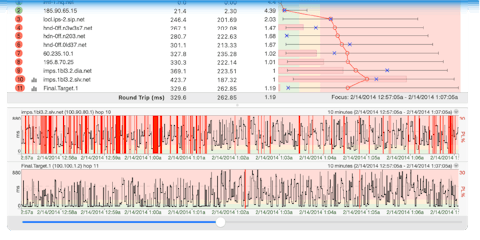The Hidden Costs of Remote Network Downtime (And How to Stop Them)

Remember the last time your remote network went down?
Sure you do: That pit in your stomach, the flood of complaints, the scramble to get everything back online. We've all been there.
But while most of us have tools to fix problems once they happen, here's a radical thought: What if you could catch issues before they spiral into full-blown disasters?
The good news is that you can. Let's take a look at how, and why it's important to keep tabs on your network's performance.
Why playing detective after the fact isn't enough
Think of your remote network like your car. You wouldn't wait for the engine to fail before checking the oil, right? Yet surprisingly, that's exactly how many businesses treat their remote networks. They wait for things to break, then rush to fix them.
Here's what you might recognize in your own experience:
- Your team is working smoothly until suddenly, everything grinds to a halt
- Customer calls start dropping, data fails to flow, and you're left scrambling for answers
- By the time you identify the problem, hours of productivity are already lost
The hidden costs of remote network blindness
Let's talk about the hidden impacts of network downtime. The true cost of network issues goes far beyond the immediate technical problems. When your network hiccups, it creates a ripple effect that touches every corner of your business.
The employee experience factor
Think about your remote workers — a growing part of most modern workforces. For them, network reliability isn't just about convenience; it's about their ability to do their jobs effectively. Poor network performance can lead to:
- Dropped video calls during crucial client meetings
- Delayed access to cloud-based tools and resources
- Frustration and decreased job satisfaction
- Lost productivity that adds up over time
According to recent studies, employees lose an average of 30 minutes per day dealing with technology issues.
Multiply that across your entire remote workforce, and you'll see why proactive monitoring isn't just an IT concern, it's a business imperative.
The security angle
Here's something many people don't realize: continuous network monitoring isn't just about performance — it’s also a key component in identifying potential security threats. Unusual network behavior patterns can often be the first indicator of:
- Unauthorized access attempts
- Malware activity
- Data exfiltration
- DDoS attacks in their early stages
By maintaining constant vigilance over your network's behavior patterns, you're not just protecting performance, you're strengthening your security posture.
The customer trust factor
It's no secret that your remote network's performance directly impacts customer interactions. And there are literally hundreds of ways a janky network connection can tarnish customer trust. Consider just a few of these these scenarios:
- A customer service representative's screen freezes during a critical support call, and the representative is unable to access important customer data
- Dropped or choppy audio during customer calls
- Video conferencing tools stutter during important client presentations
Each of these moments erodes customer confidence, and rebuilding trust is always more expensive than maintaining it. In fact, according to Bain & Company, acquiring a new customer can cost 6-7 times more than retaining an existing one. Additionally, a 5% increase in customer retention can lead to a 25-95% increase in profits.
The bottom line
While the immediate costs of network downtime are easy to calculate, the long-term financial impact of chronic network issues is often underestimated. This includes:
- Lost sales opportunities
- Decreased employee productivity
- Higher staff turnover due to frustration
- Increased support costs
- Damage to brand reputation
Remember: remote network performance isn't just an IT metric, it's a key business indicator that deserves constant attention. The question isn't whether you can afford continuous monitoring; it's whether you can afford to operate without it.
PingPlotter: An early warning system for remote networks
With PingPlotter's continuous monitoring, you're not just protecting your network, you're protecting your business's bottom line, reputation, and future growth potential.
This is where PingPlotter shines, but not in the way you might expect. While yes, it's fantastic at troubleshooting (and our IT friends love it for that), its real magic lies in its ability to be your network's early warning system.
Think of it as a knowledgeable network guru that can:
- Tap you on the shoulder the moment something seems off with your network
- Show you exactly where problems are brewing before they affect your team
- Keep a detailed diary of your network's behavior, making it easy to spot patterns
- Alert you to issues while they're still minor hiccups rather than major headaches
To make this happen, PingPlotter doesn't just throw charts and numbers at you (though it has those if you're into that sort of thing). Instead, it:
- Shows you network performance in clear, visual terms anyone can understand
- Alerts you to problems in real-time, like a trusted colleague watching your back
- Helps you prevent issues instead of just reacting to them
- Gives you the historical context to make smart, long-term decisions
Ready to stop playing network firefighter?
If you're tired of being the person who's always putting out fires, maybe it's time for a change. Think of PingPlotter as your network's personal health monitor – catching issues while they're small, keeping things running smoothly, and helping you sleep better at night knowing you're ahead of the game.
Because at the end of the day, isn't preventing problems better than fixing them?
Want to see the difference proactive monitoring can make? Let's talk about how PingPlotter can transform your approach to network health. After all, your network is too important to wait until something breaks.

